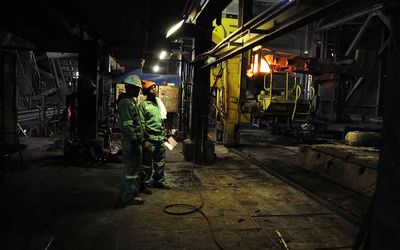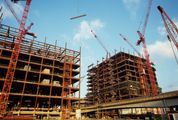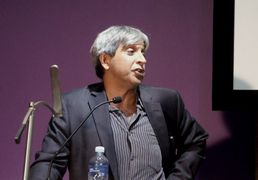Diversity requires tailored solutions
by Henk Langenhoven
2016-08-18 05:00:00.0
THE metals and engineering sector in SA is at a crossroad. Unfortunately, the debate about what needs to be done focuses almost entirely on tariff protection and if upstream or downstream industries will benefit or be harmed by this move. This makes the perspective a type of zero-sum game analysis.
We are asking the wrong questions. The sector is diverse; it does not consist individually of the basic ferrous industry and the rest or downstream industries. Analysis should be focused on the dynamics of the component sub-industries, with sustainable solutions devised that will revive them individually. This holistic approach would put the sector on a growth trajectory.
The South African market for metals and engineering products consists of production by local producers, minus their exports, plus imports. This aggregate market kept on growing and peaked in 2013 — higher than in 2008. It is estimated to be at virtually the same level as in 2008.
For each sub-industry, this situation differs due to its unique dependence on exports and the dynamics of its own domestic market. Since 2000, the domestic markets for rubber products grew 33%, ferrous products 66%, metal products 18%, machinery 56%, electrical machinery and equipment 54% and other transport equipment 73%.
Why then is the sector production languishing at 30% below the 2007 peak levels? Part of the answer lies in export markets being important, at about 50% of production, but weak. This weakness is coupled with depressed export prices in tandem with commodity price trends. Domestic producers continued to lose market share in their own market, from about 50% in 2013 to only 43% this year. The opportunity cost is R50bn worth of production forfeited and an estimated 40,000 jobs not created.
When one looks at the current job losses in isolation, the situation looks dire, especially due to an apparent acceleration in jobs lost recently. Jobs are shed slower than production declines, indicating worse may still come. Over the 12 months to mid-year 2016, an estimated 25,000 people lost their jobs in the sector, from a total of 400,800 employees to 375,000.
The cost in terms of company closures and value destroyed makes for equally bad reading. At an average company size of 50 employees, these numbers translate into 500 companies closing down during the year.
However, a set of different questions should be asked.
Surely, in-depth analyses of what each individual sub-industry is exporting to which countries, and what competing products are being imported, will yield an array of answers and options of what could be done to regain SA’s product share in the domestic market, and larger export successes.
Questions must be directed at how to regain domestic market share in niches where the sub-industries can compete, and improving efficiencies through modernisation and fixed investment where they are lagging. Recovery in each of the mining, construction and car sectors is crucial for demand growth.
World-class cost effectiveness and moral suasion will ultimately attract private sector demand.
The net result of losing domestic market share is lower production (-4.5% over the past 12 months) and lower capacity utilisation (-2.4%). At 77% capacity utilisation (against a benchmark of 85%), it means that fixed cost of production could be up to three times higher than at full capacity.
Mitigating against some of the variable costs seems critical. A "labour partnership for growth" will have to be formed.
The debate about the costs of energy and carbon taxes is critical for the survival of the sector.
It seems as if the structural shifts in market dynamics have not sunk in for companies, with some still viewing it as a cyclical downturn, and policy makers who are largely stuck on the "pipeline" construct of how to focus policy.
The wrong questions are consequently asked and the changing of course on a new path of efficiency and competitiveness is delayed.
• Langenhoven is chief economist of the Steel and Engineering Industries Federation of Southern Africa.

AT WORK: A steel rod is heated at the Scaw Metals plant in Germiston. File picture: SOWETAN
THE metals and engineering sector in SA is at a crossroad. Unfortunately, the debate about what needs to be done focuses almost entirely on tariff protection and if upstream or downstream industries will benefit or be harmed by this move. This makes the perspective a type of zero-sum game analysis.
We are asking the wrong questions. The sector is diverse; it does not consist individually of the basic ferrous industry and the rest or downstream industries. Analysis should be focused on the dynamics of the component sub-industries, with sustainable solutions devised that will revive them individually. This holistic approach would put the sector on a growth trajectory.
The South African market for metals and engineering products consists of production by local producers, minus their exports, plus imports. This aggregate market kept on growing and peaked in 2013 — higher than in 2008. It is estimated to be at virtually the same level as in 2008.
For each sub-industry, this situation differs due to its unique dependence on exports and the dynamics of its own domestic market. Since 2000, the domestic markets for rubber products grew 33%, ferrous products 66%, metal products 18%, machinery 56%, electrical machinery and equipment 54% and other transport equipment 73%.
Why then is the sector production languishing at 30% below the 2007 peak levels? Part of the answer lies in export markets being important, at about 50% of production, but weak. This weakness is coupled with depressed export prices in tandem with commodity price trends. Domestic producers continued to lose market share in their own market, from about 50% in 2013 to only 43% this year. The opportunity cost is R50bn worth of production forfeited and an estimated 40,000 jobs not created.
When one looks at the current job losses in isolation, the situation looks dire, especially due to an apparent acceleration in jobs lost recently. Jobs are shed slower than production declines, indicating worse may still come. Over the 12 months to mid-year 2016, an estimated 25,000 people lost their jobs in the sector, from a total of 400,800 employees to 375,000.
The cost in terms of company closures and value destroyed makes for equally bad reading. At an average company size of 50 employees, these numbers translate into 500 companies closing down during the year.
However, a set of different questions should be asked.
Surely, in-depth analyses of what each individual sub-industry is exporting to which countries, and what competing products are being imported, will yield an array of answers and options of what could be done to regain SA’s product share in the domestic market, and larger export successes.
Questions must be directed at how to regain domestic market share in niches where the sub-industries can compete, and improving efficiencies through modernisation and fixed investment where they are lagging. Recovery in each of the mining, construction and car sectors is crucial for demand growth.
World-class cost effectiveness and moral suasion will ultimately attract private sector demand.
The net result of losing domestic market share is lower production (-4.5% over the past 12 months) and lower capacity utilisation (-2.4%). At 77% capacity utilisation (against a benchmark of 85%), it means that fixed cost of production could be up to three times higher than at full capacity.
Mitigating against some of the variable costs seems critical. A "labour partnership for growth" will have to be formed.
The debate about the costs of energy and carbon taxes is critical for the survival of the sector.
It seems as if the structural shifts in market dynamics have not sunk in for companies, with some still viewing it as a cyclical downturn, and policy makers who are largely stuck on the "pipeline" construct of how to focus policy.
The wrong questions are consequently asked and the changing of course on a new path of efficiency and competitiveness is delayed.
• Langenhoven is chief economist of the Steel and Engineering Industries Federation of Southern Africa.























